It’s time for me to gush about rosehip oil again! It’s my favourite skincare oil, and it’s my SOS beauty saviour – whenever my skin is looking dull or pimply or otherwise subpar, I give it a break from all my other treatments and just slap on rosehip oil. Today I’m focusing on one of its components: linoleic acid, also known as an omega-6 fatty acid.
What is linoleic acid?
If you remember from my soap chemistry post, all fats and oils are composed of three fatty acids (the blue sections on the right hand side), chemically bound to glycerin (the purple section on the left hand side).
Linoleic acid is one of the many fatty acids that you can attach. It’s unsaturated, which means it tends to stay liquid at lower temperatures. Other unsaturated fatty acids include oleic, alpha-linolenic, gamma-linolenic and ricinoleic acids. There are also saturated fatty acids (lauric, myristic, palmitic, stearic) which are more common in solid fats.
As you can see from the structures, the saturated fatty acids are quite straight, oleic acid is reasonably straight, while linoleic acid is a bit kinky.
What does linoleic acid do for skin?
People who are acne-prone tend to have a low percentage of linoleic acid, and a high percentage of oleic acid in their sebum (natural skin oil). It’s thought that these low linoleic acid levels is one of the things that causes acne.
In one study, rubbing 2.5% linoleic acid on the faces of people with mild acne made their microcomedones (baby pimples) smaller – fantastic news for people looking for acne relief! This is particularly helpful because the most popular acne treatments (benzoyl peroxide, antibiotics, tea tree oil) focus on killing bacteria, so this targets a completely separate part of the process, plus it can help with non-infected clogged pores as well. 0.5% linoleic acid in ethanol was also good for reversing UV-induced hyperpigmentation (aka sun spots) in lab animals.
Linoleic-rich sunflower oil was also more effective at increasing the resilience of premature infant skin than olive or soybean oils (although how applicable these studies are to adult human skin is debatable…but it probably doesn’t hurt!).
Linoleic acid also tends to make oils runnier and less thick-feeling (oleic acid makes oils feel richer), which is great for acne-prone skin since that tends to be oily!
The bad news
There’s two parts to the bad news.
Firstly, linoleic acid is still connected to glycerin in oils, whereas most of these studies used detached linoleic acid (there is a very small amount of free fatty acids in oils, but it’s usually well below 2%, particularly if it’s not rancid). Your skin does have enzymes which can very slowly break off the linoleic acid, so you’d be getting more linoleic acid from a linoleic-rich oil than a low-linoleic oil. But it’s not going to be anywhere near as effective or predictable as a product that contains free linoleic acid (but those are rare).
Oils with a high linoleic acid content will also go off pretty quickly. The antioxidants in rosehip oil help keep it from going rancid quite as quickly, but most linoleic acid-rich oils will only have a 3-6 month shelf life (Trilogy Rosehip Oil Antioxidant+, since it has antioxidants in it, actually has an incredible shelf life of 3 years – one of the reasons this has risen to the top of my rosehip oil roster).
More bad news – oleic acid is often enriched in cooking oils to slow down food from going rancid (it’s a healthier option than saturated or trans fats), so some cooking oils aren’t the same for skincare. If you do buy cooking oil to use on your face, make sure you buy one that isn’t labelled “high oleic”.
What other oils are high in linoleic acid?
Rosehip oil isn’t the only linoleic acid-rich oil – you’ll find high amounts of linoleic acid in lots of other oils (note: the exact fatty acid profile of an oil varies depending on lots of things, like where it’s grown, when it’s grown, the variety, the processing method etc., so these are just rough estimates):
| Oil | % Oleic Acid | % Linoleic Acid | % Linolenic Acid (Alpha & Gamma) | Sources |
|---|---|---|---|---|
| Safflower (low oleic type) | 8-21 | 68-83 | British Pharmacopoeia 2013 | |
| Grapeseed | 16.2 | 70.6 | Mountain Rose Herbs | |
| Rosehip | 13.9 | 44.1 | 33.9 | Mountain Rose Herbs |
| Sunflower | 14-40 | 48-74 | British Pharmacopoeia 2013 | |
| Hemp | 9.85 | 51.96 | 10.07 | Mountain Rose Herbs |
| Walnut | 21 | 56 | 13 | http://link.springer.com/article/10.1007/s11746-002-0465-y |
| Sesame | 39.21 | 45.69 | Mountain Rose Herbs | |
| Evening Primrose | 8.4 | 50-72 | 7-10 | Mountain Rose Herbs, http://www.drugs.com/npp/evening-primrose-oil.html |
| Soybean | 17-30 | 48-58 | 5-11 | British Pharmacopoeia 2013 |
| Wheat-germ | 12-23 | 52-59 | 3-10 | British Pharmacopoeia 2013 |
As you can see, even though rosehip oil isn’t the highest in linoleic acid, it’s got one of the best ratios of linoleic to oleic acid.
If you’re acne-prone, these oils are great starting oils for oil cleansing or moisturising since the texture’s so light. You can rub a few drops into your skin as part of your skincare routine (I’d recommend near the end of your routine – check out this post about why the order in your routine matters), or mix it into your moisturiser.
Extras
The linoleic acid content isn’t the only beneficial aspect of rosehip oil – you’ll also get some antioxidants and vitamin A. I think it’s the combination of these rather than a single component that makes my skin respond so well to rosehip oil. I’ve banged on about vitamin A for skincare in the past. Cold-extracted rosehip oil is also rich in antioxidants, which limit oxidative damage from the sun, pollutants and even just air and being alive. Trilogy Rosehip Oil Antioxidant+ actually has a few extra additions – tomato and cranberry oils, and lycopene – which means you get more antioxidants in one hit. If you’re lazy like me, you might also want to upgrade your rosehip oil to an antioxidant-boosted version!
(updated 2017-07)
Trilogy Rosehip Oil Antioxidant+ was provided for editorial consideration, which did not affect my opinion. This post also contains affiliate links – if you decide to click through and support Lab Muffin financially, thank you! For more information, see Disclosure Policy.
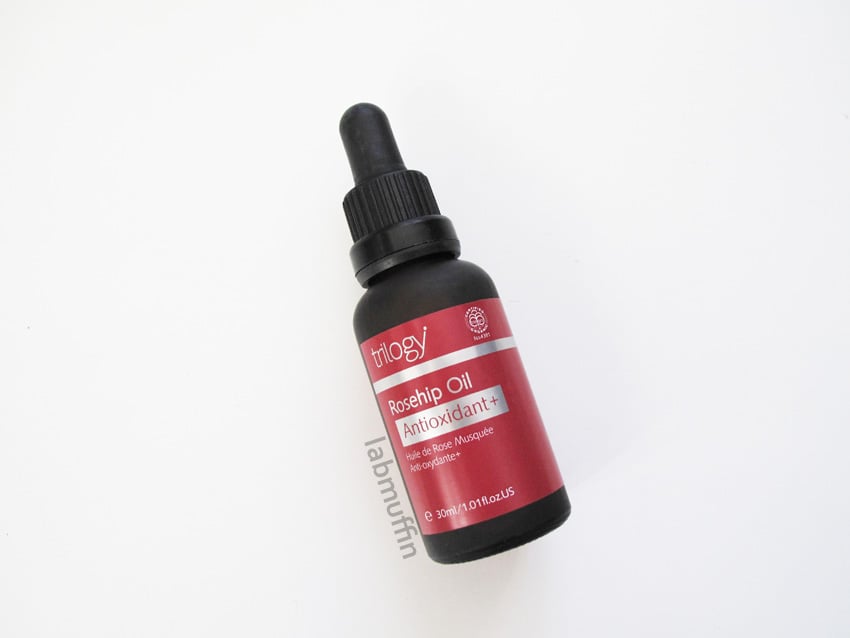
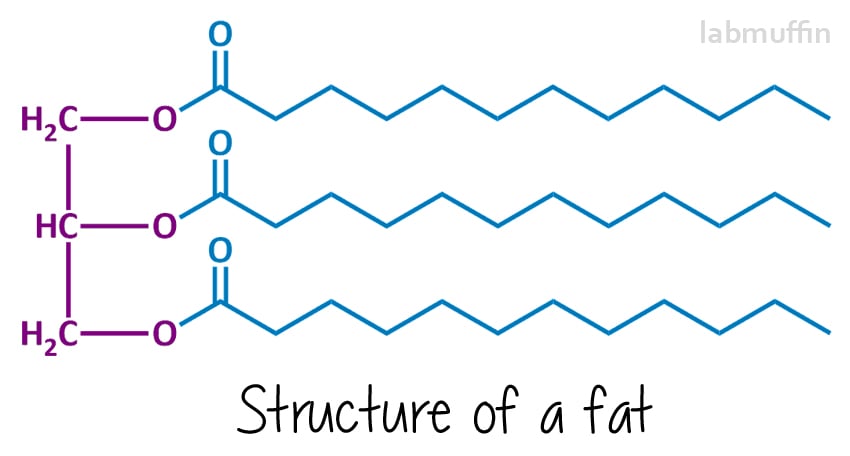
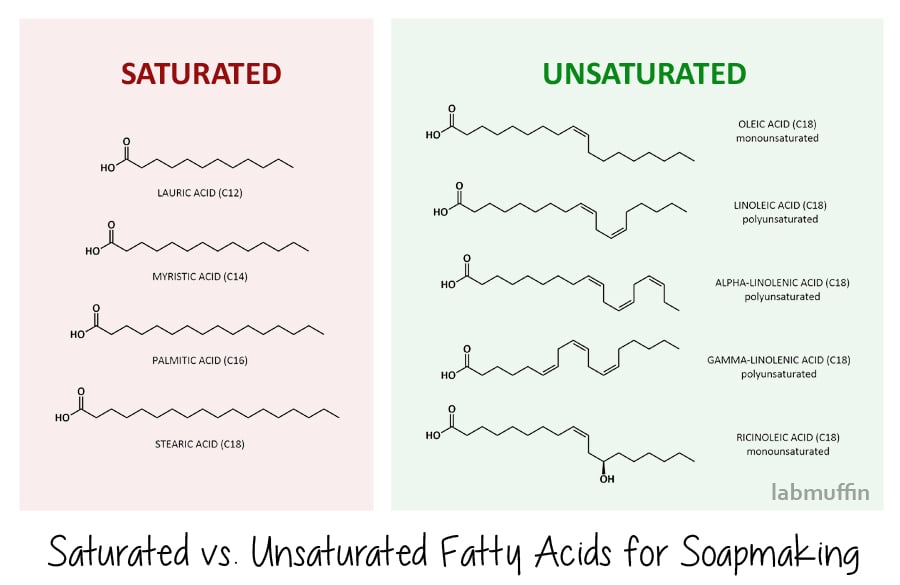
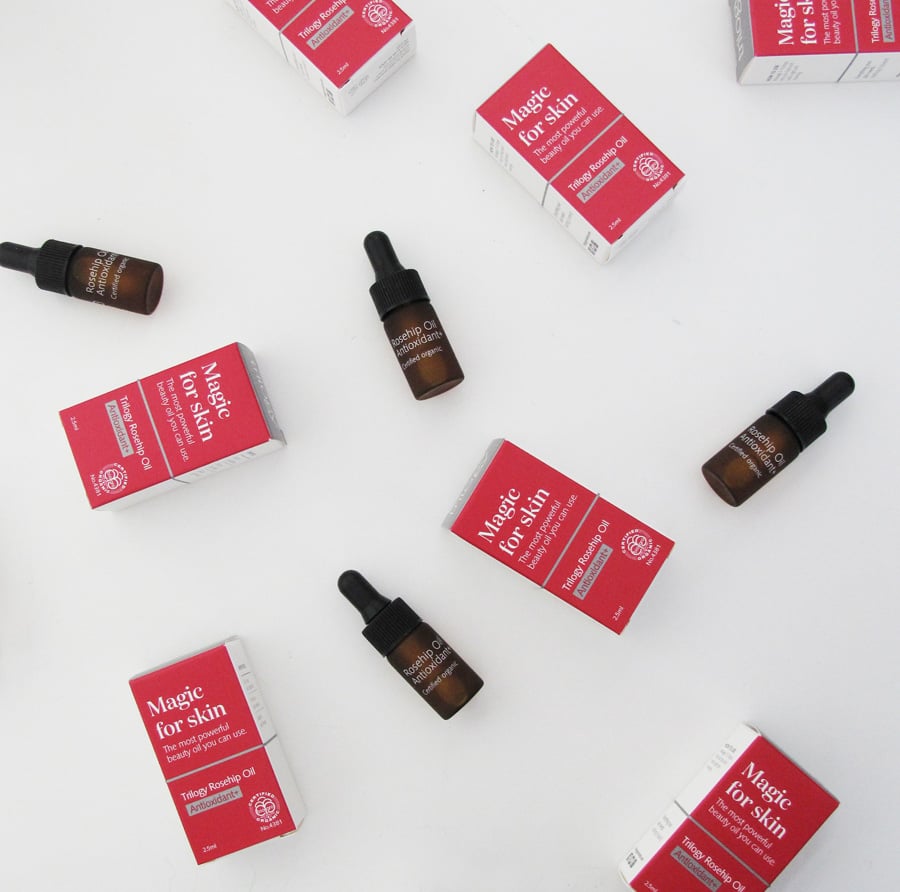
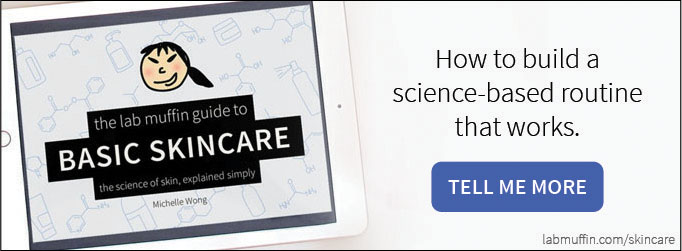
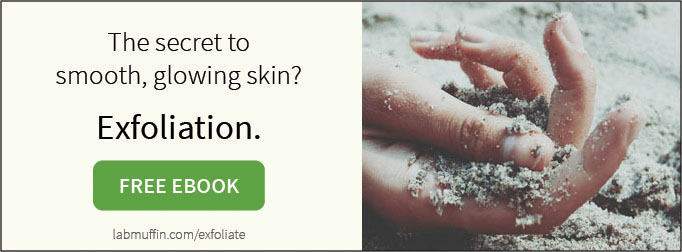
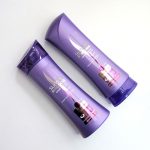
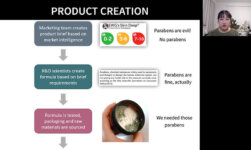
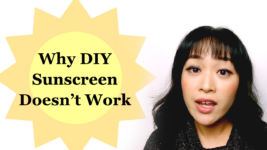
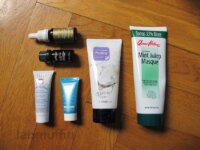
Have you tried any of these ones LabMuffin? Some interesting alternatives to Rosehip (which I’m also a huge fan of). I’m just waiting for these to come back into stock to give them a go. They do a vitamin C serum as well.
http://www.moogoo.com.au/serums-oils/serum-testing-pack.html
No I haven’t! I’ve heard good things about tamanu for dry skin though, and some skincare nerds I know are big fans of evening primrose 🙂
Tamanu oil thick and “heavy” oil + very comedogenic!
Great post Michelle.
I cannot rave enough about Rosehip oil to everyone I speak too. I even rub it on my man’s beard to keep the skin looking nice and moisturised. I wondered though, is there a way to tell if the Rosehip oil has expired/gone bad? I don’t usually have any product left in my bottle after 1.5 months so I should be alright but i’m just thinking if it does get neglected?
If it smells funny, then it’s gone bad! (And I mean proper funny, not normal-rosehip funny.)
That’s good to know, thanks! I have a bottle that I’ve had for a year, and it’s been in the fridge most of that time, but it still looks and smells exactly the same as when it was new. I hope that means it’s still working. It still makes my skin feel nice, anyway!
I have a bottle that I’ve probably had for >18m – it still smells normal but the part about shelf lives made me realize it’s probably why I’ve been getting inflammation on my cheeks after using it, before I’ve been fine. Definitely buying the antioxidant+ one next! Thank you
Yaaay for Rose Hip oil! It’s definitely become a staple in my routine. I didn’t realise it was actually that good at reducing acne, thanks for the informative post as always!
Tasha // shiwashiful.
Thank you this post is excellent timing! I have been going through a really strange skin period. Skin is dry, patchy and flakey when my skin is usually fairly oily. I remember years ago having great results with rosehip oil and was planning to try it again.
Priceline have a get 3 for the price of 2 at the moment until 7/4/2015 so that’s a bonus
Cool. Thanks for this post too. How would this be used in a standard skincare routine. A few drops on clean skin before moisturizer? Thanks.
Yep, or you can mix a few drops into your moisturiser.
Cool, thanks.
Hi there, I just found your site while researching science behind olaplex. I became transfixed and love the skincare posts too. Thanks for posting fun and accurate info! As a medical doctor, my org chem is rusty and my hypochondriasis/chemophobe is intensified; so I really appreciate your research and summations. BTW your hair is georgeous. It is not a fro! It was great before keratin. I wish I woke up with those non frizzy waves! I hope you dumped that guy who criticized your hair. Men can be … Anyway, I’m looking forward to doing my own olaplex treatment after bleach damage. Thanks
“(I’d recommend near the end of your routine – check out this post about why the order in your routine matters), or mix it into your moisturiser.”
Which post, does is still exist? THANKS! :*
Sorry, forgot to insert the hyperlink – it’s fixed now!
What a great and informative post!
Just one question: Does this also apply to extracts and other forms of the same ingredient?
So will olives fx still be high in oleic acid when they aren’t present as oils but other forms (if that even exists) – and will grapefruit extracts be high in linoleic acid like grapefruit oils?
Hi Michelle, I love rose hip too. But I noticed you suggesting wheat germ oil as a good acne solution. If you check its comedogenic rating then you’ll see its actually very pore clogging. It’s rated 5 on a scale of 0-5. Just wanted your readers to know this because it could cause a lot of trouble for acne/sensitive skins. Everyone is different, but I break out with even just rose hip if I use it too much. And rose hip is only a 2/5.
I know I am a lot late to the party, but I was wondering – I have tried good-quality rosehip seed oil on my face, and every time it caused me godawaful breakouts.
I have dry-ish skin (I’m 39) which isn’t particularly acne-prone (I used to have combination skin when I was a teen, but that passed, and I never had much acne then, either), and had hoped to use the rosehip seed oil for its supposed skin-health properties, so I was unhappily surprised. A bit of searching around showed that some people do break out from it, but I have found no actual scientific explanation as to why.
I have a degree in chemistry, but obviously don’t know enough about what causes acne specifically (not a cosmetic chemist). Coconut, shea, cocoa, castor, olive, and sesame oils don’t give me any problems when used neat or as lotions (I DIY those, typically with very good results, and yes, with preservatives!).
Do you have any ideas?
I was silly and forgot to click ‘notify me of follow up comments’, so clicking that now!
I’m not sure if you’ve considered these possibilities already:
* Rosehip oil, especially the more expensive cold-pressed or CO2 extracted stuff, has a lot of impurities so going for cheaper, more purified stuff could actually help.
* Linoleic acid-based oils oxidise more quickly so it could be forming all sorts of random stuff that could be triggering it.
Veronika, I am very much like you…in my late 30s with dryish skin. Mine gets a bit shiny even if it is dry. Rosehip oil (and any other high linoleic acid oil) makes my skin feel tight/dry and causes breakouts. Instead I do much better with high oleic acid oils, especially marula oil. Another good one is camellia oil (make sure it’s Camellia japonica, not the oleifera or sinensis); it feels thin and ‘dry’ like rosehip oil but it doesn’t dry you out.
Hi,
How are the ratios calculated? Let’s take Walnut: Linoleic acid 56 percent, Oleic Acid 21 percent, the ratio between the two must be 37.5%, not 13. How are those ratios calculated?
Thanks!
The ratio isn’t calculated – the column with 13 in it is actually a third type of fatty acid (linolenic acid or omega-3, vs oleic which is omega-9 and linoleic which is omega-6).
i like it
This is the most useful blog post I’ve read in my whole life, thank you. I have some rosehip oil handy, and was going to buy evening primrose anyway. Hopefully this is the solution I’ve been waiting 15 years for
I know this is an old post but I’m hoping you might see my comment anyway! I’m interested in oil cleansing and I’m wondering what kind of oil would be preferable for my acne prone skin (without buying 10000 oils to test). If acne prone skin has a higher percentage of oleic acid and lower linoleic acid, would it be best to cleanse with an oil with the same ratio? Or do you think an oil with a higher linoleic acid would be better? Or maybe it doesn’t matter at all since it will be all washed away in the end anyway. I have no idea! Any insight would be super helpful.
Love love love your blog and thank you!
I don’t think it makes a big difference, but I prefer high-linoleic – it feels less heavy!
Hi I love your blog! one Q – “most of these studies used detached linoleic acid” – where could one possibly get this detached linoleic acid??
Rose hip seed oil is one of my favorites.
I’ve read, many times, that it has a Vitamin A (as beta-carotene, maybe?) content but haven’t been able to find any credible information to substantiate it. Could you point me in the right direction as to where I could find scientific evidence of the vitamin content of RHSO, please? Thanks so much.
The content varies between batches and with different regions, but here’s a source stating the carotene content of a specific oil: http://www.sciencedirect.com/science/article/pii/S0960852401001614
Thank you for the information.
Since beta-carotene is a precursor of Vitamin A and the conversion takes place internally after consumption, would the same conversion take place when applied topically, and if so, how?
Hi, Michelle, I know this is a super old post, but I saw an article by BeautyEditor saying that most oils are actually bad for your skin because their lack of stability ages us? I was wondering if you could debunk or confirm this if you have the time because it is really freaking me out, but I don’t know anything about science, so I thought I’d ask you… Thank you x
http://beautyeditor.ca/2014/02/17/cause-of-skin-aging
I’m not Michelle, obviously, but I’ve read that beautyeditor’s post too, and actually did quite a lot of digging around, just to find out that the statements made there are pseudo-scientific, and aren’t backed up by any credible or relevant sources. Our bodies and skin need polyunsaturated fats to function properly and be healthy. If you are curious to read about conclusions of numerous studies, there is a lot on PubMed, and also Oregon State University has published this great, very readable article that sums them all up with references and all- http://lpi.oregonstate.edu/mic/health-disease/skin-health/essential-fatty-acids . Hope this helps.
Hi Lisbeth, thanks for your reply! I somehow missed it when I posted before. I also got that vibe from the beautyeditor (pseudoscientific) but didn’t really look into it– thanks for digging around and sharing the info!
Hi Michelle, like Romie, I too would love to hear your thoughts on this issue! Beauty Editor claims that oils are generally bad due to oxidation, and touts squalane as being superior:
https://beautyeditor.ca/2017/02/22/squalane
Hope to get your feedback on this! 🙂 Right now, I’m using a moisturizer which contains rosehip oil and it’s working well for me. I’m guessing because it contains other ingredients which act as antioxidants? (Vitamin E, green tea extract)
Not sure if you’ve seen it yet but I did a post on it here: Are unsaturated oils bad for your skin?
I should do a proper post about this, I’ve been asked it a lot and I have some info compiled but haven’t gotten around to it! The short answer is that they haven’t got any evidence that it’s bad for skin, and there are some studies where plant oils have been good for skin, so the real world evidence trumps the conjecture. Proper post soon!
Hi Michelle, thanks for replying and looking forward to your post about this! Would also love to hear your thoughts on squalane (and/or squalene) oil 🙂
I’ll have to look into it!
Hey! Not sure if you’ve seen it yet but I did a post on it here: Are unsaturated oils bad for your skin?
Upon reading this (again), I confused myself. Why is rosehip oil better than grapeseed? The ratio of linoleic to oleic is higher and without linolenic. Or is linolenic good also. Sorry – I thought I had this figured out, sigh. Guess my chemistry days are too far behind me.
Linolenic is good too I think! Grapeseed is great as well, but for some reason my skin prefers rosehip – perhaps it’s the extras, like the vitamin A?
Why would someone be breaking out with acne prone skin (asking for a friend) by using rosehip oil? Or does it truly cause purging?
I would say breaking out is more likely than purging.
Hi Michelle,
Can you help me with this one? https://beautyeditor.ca/2017/02/22/squalane
I stopped using linoleic acid-rich oil after reading this article (I used goodness chia see oil) because unsaturated acid oil (mono & poly) are prone to rancidity. Can you help me enlighten this? Thank you in advance!!!
I did a post addressing it here: Are unsaturated oils bad for skin?
What mechanism could linoleic acid reverse UV-induced hyperpigmentation? And do you think that topical application of rosehip oil can really penetrate to the most superficial living epidermal layer (stratum granulosum)? The reason I ask is that the articles I was able to find demonstrated this reduction only in vitro conditions which we know is a far cry from in vivo. Thanks!
Here are a couple of human studies:
https://www.ncbi.nlm.nih.gov/pubmed/15056874
https://synapse.koreamed.org/DOIx.php?id=10.3346/jkms.2002.17.4.518
This post has got me to try rosehip oil. I wish I’d read all the comments first, though! I missed your reply to another commenter about choosing a more refined variant, so I’ve got a cold-pressed and unrefined one. Those were the only type available any way!
What kind of active ingredients can rosehip oil be used with? And are there any that it shouldn’t be used with? Mine is very yellow which makes me thing beta-carotene. No idea if that converts to retinol in the skin, though. It’s supposed to very rich in Vit C, does that mean it shouldn’t be used with say, niacinamide?
I just checked my Trilogy rosehup oil antioxidant plus and it still says it has a shelf life of 6 months – the website says the same. I’m guessing this explains why I’ve been getting inflammation in the mornings as my bottle is older than that… I’m wondering where you got the 2-3 years from?
Shelf life and expiry after opening is different – shelf life is how long it lasts during storage when it’s still sealed.